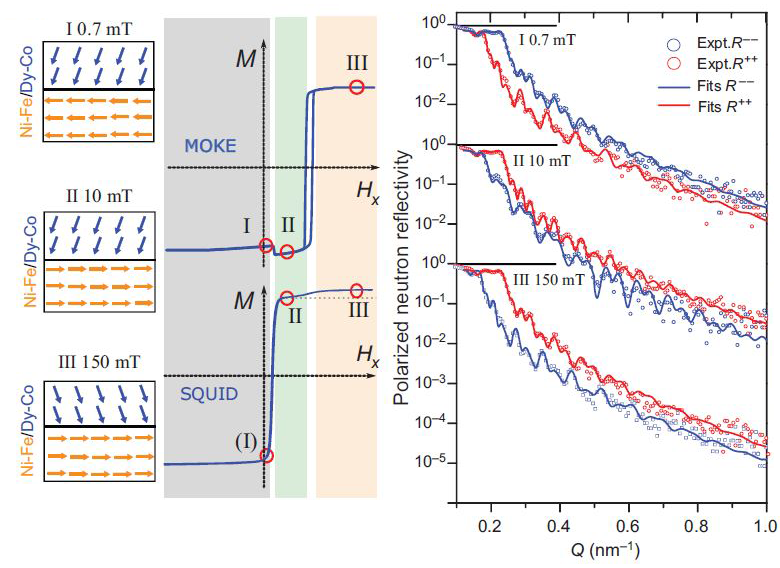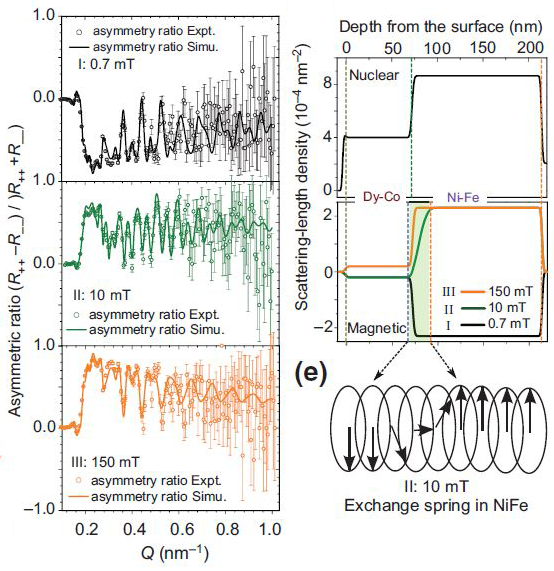SuperADAM
CRG - Advanced Reflectometer for the Analysis of Materials

(left) Three different magnetic states marked as I, II, and III are obtained from the MOKE and SQUID hysteresis loops. (right) PNR data (expt.), and the results of the simulation (fits) taken at in-plane fields of μ0Hx = 0.7, 10, and 150 mT for spin-up neutrons (red) and spin-down neutrons (blue), representing the three states given in (left) obtained after the sample was premagnetized at a field of μ0Hz = −1 T.

(left) Spin-asymmetry ratio (R++ − R−− )/(R++ + R−− ) for the three spin states. (right) Nuclear and magnetic scattering-length density profiles of Dy-Co/Ni-Fe layers obtained from the simulation. Magnetic states I, II, and III are clearly observed, and are well separated by the two reversible kinks, at μ0HEB = 3 and 39 mT. For state II, the transition regime in the magnetic-scattering-length density data (green area) indicates an exchange springlike spin texture (only the in-plane component) at the interface as depicted for 3 < μ0Hx < 39 mT.
Observation of a Chirality-Induced Exchange-Bias Effect
Chiral magnetism that manifests in the existence of skyrmions or chiral domain walls offers an alternative way for creating anisotropies in magnetic materials that might have large potential for application in future spintronic devices. Here we show experimental evidence for an alternative type of in-plane exchange-bias effect present at room temperature that is created from a chiral 90◦ domain wall at the interface of a ferrimagnetic-ferromagnetic Dy-Co/Ni-Fe bilayer system. The chiral interfacial domain wall forms due to the exchange coupling of Ni-Fe and Dy-Co at the interface and the presence of Dzyaloshinskii-Moriya interaction in the Dy-Co layer. As a consequence of the preferred chirality of the interfacial domain wall, the sign of the exchange-bias effect can be reversed by changing the perpendicular orientation of the Dy-Co magnetization. The chirality-created tunable exchange bias in Dy-Co/Ni-Fe is very robust against high in-plane magnetic fields (μ0H ≤ 6 T) and does not show any aging effects. Therefore, it overcomes the limitations of conventional exchange-bias systems.
PHYSICAL REVIEW APPLIED 12, 024047 (2019) / DOI: 10.1103/PhysRevApplied.12.024047
